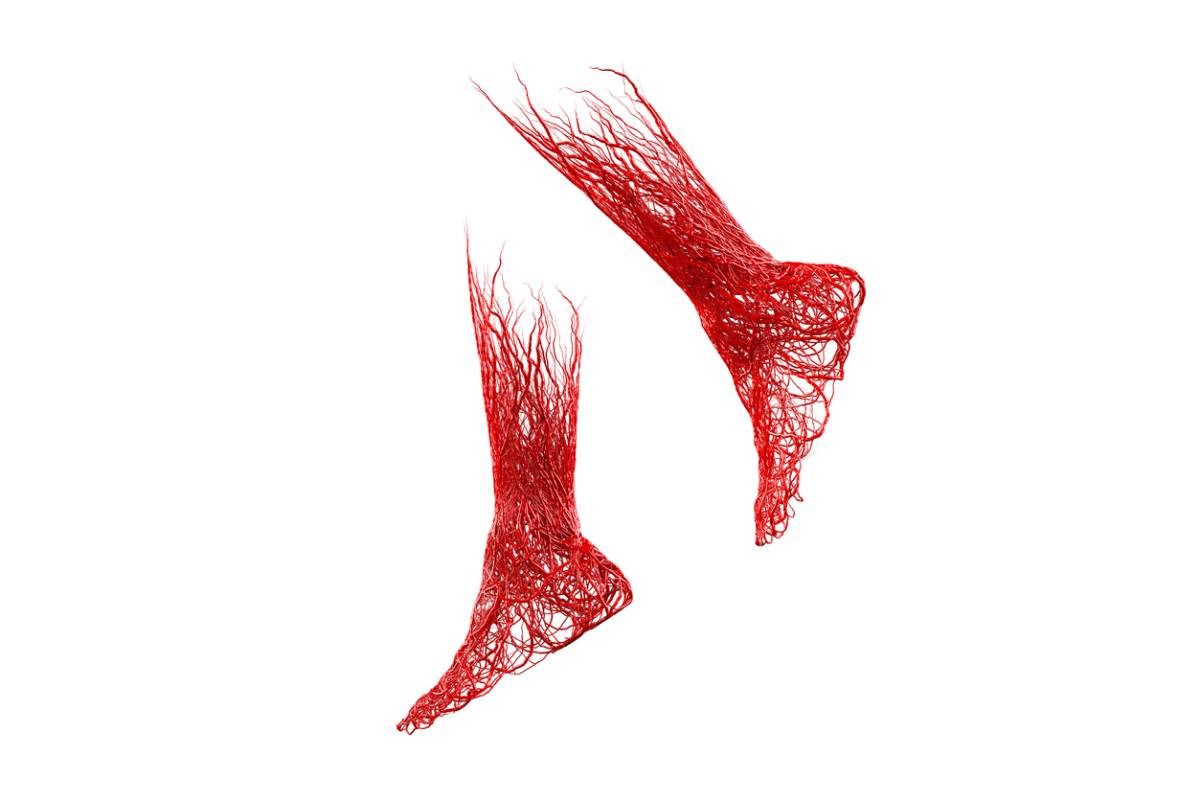Poor circulation can be defined as the inadequacy of blood flow to a certain area of the body. The body’s circulation system is responsible for sending blood, oxygen, and nutrients throughout the body. When blood flow to a specific part like a foot is reduced, people may experience numbness, tingling, pain, or muscle cramps in the leg or feet.
Poor circulation which affects the foot can be a sign of an unhealthy lifestyle or underlying health issues. Let’s look at how poor circulation affects foot pain.
How Poor Circulation Affects Foot Pain
Most people experience a “pin and needle” feeling in their toes or feet. However, if anyone notices such symptoms regularly, it is important to make an appointment with a doctor. A podiatrist can help patients to manage circulation issues that affect the feet. And never ignore poor circulation in the foot area.
Causes of Poor Circulations:
Peripheral Artery Disease:
Peripheral artery disease is a common condition in which narrowed arteries reduce blood flow to the legs. Usually, the legs don’t receive enough blood flow to keep up with demand. This may cause foot pain when walking. Over time if people neglect this issue the blood flow reduces more and this extreme condition can cause numbness, tingling, nerve damage, or tissue damage.
Varicose Veins:
A varicose vein is a vein that becomes enlarged due to valve failure. These veins usually have a damaged and engorged appearance and are often found on the back of legs. The damaged veins can’t move blood efficiently as other veins, so poor circulation may become a problem.
Blood Cots:
It is a common problem that causes poor circulation in the feet. Clots may obstruct blood vessels and if they occur in the legs they may eventually lead to pain and discoloration. This occurrence is commonly known as deep vein thrombosis. Women who are obese are inclined to develop this condition.
Diabetes:
Diabetes puts patients at high risk for conditions that affect the circulatory system. High blood glucose levels cause fatty deposits to form inside blood vessels. Diabetic patients will often complain of cramping in their legs. Sometimes diabetics have a difficult time detecting the signs of poor circulation.
Obesity:
The most common health-related issues caused by obesity are hypertension and diabetes. Obesity can also lead to poor circulation which can cause blood clots. The most common symptoms of poor circulation include tingling, numbness, throbbing or stinging pain in limbs, and muscle cramps.
Symptoms of Poor Circulation
- Feet feel cold, even other parts of the body are warm.
- Swelling and water retention in the toes, feet, and ankles.
- Extreme dry skin, including cracked heels
- Numbness, tingling
- “Pin and needle” sensation
- Pale or blue skin color
- Muscle feels weak when walking
- Sometimes chest pain
How to Boost Circulation
- Walking is the most effective exercise to help improve blood circulation in the legs.
- Stretching exercises
- A warm foot bath and the use of a pumice stone to smoothen the dry skin will increase circulation.
- A healthy diet improves circulation, including fish oil such as omega 3, ginger, and garlic.
- Stop smoking because smoking harms the walls of the arteries.
- Yoga gets the blood flowing! Relaxation helps circulation, movement brings more oxygen to cells, twisting brings fresh oxygenated blood to organs, and inversion reverse blood flows from the lower body to the brain and heart.
- Compression stockings are specially designed to apply pressure to the legs, helping maintain blood flow and reduce discomfort and swelling.
Treatments
There are lots of things a patient can do, including minimally invasive heel pain treatment ones to get rid of poor circulation.
For example, heel spurs can affect day-to-day life. Minimally invasive heel surgery in Los Angeles can restore heel health in very minimal time.
Self-help is the better and first option for good circulation. If anyone has a more serious medical condition, physicians properly diagnose, and in some cases perform angioplasty or stenting. Advanced cases might need surgical bypass or endarterectomy.
The Heel Pain Institute proudly serves Westlake and Oxnard communities and surrounding areas with their suggestions and treatments for over 20 years. Our doctors stay dedicated to helping patients with their problems.
